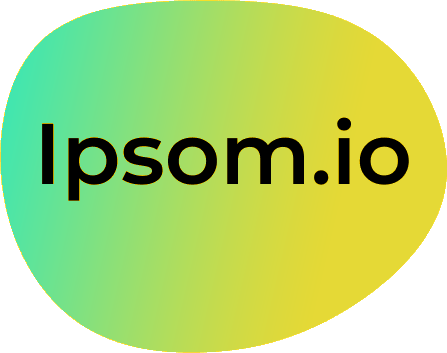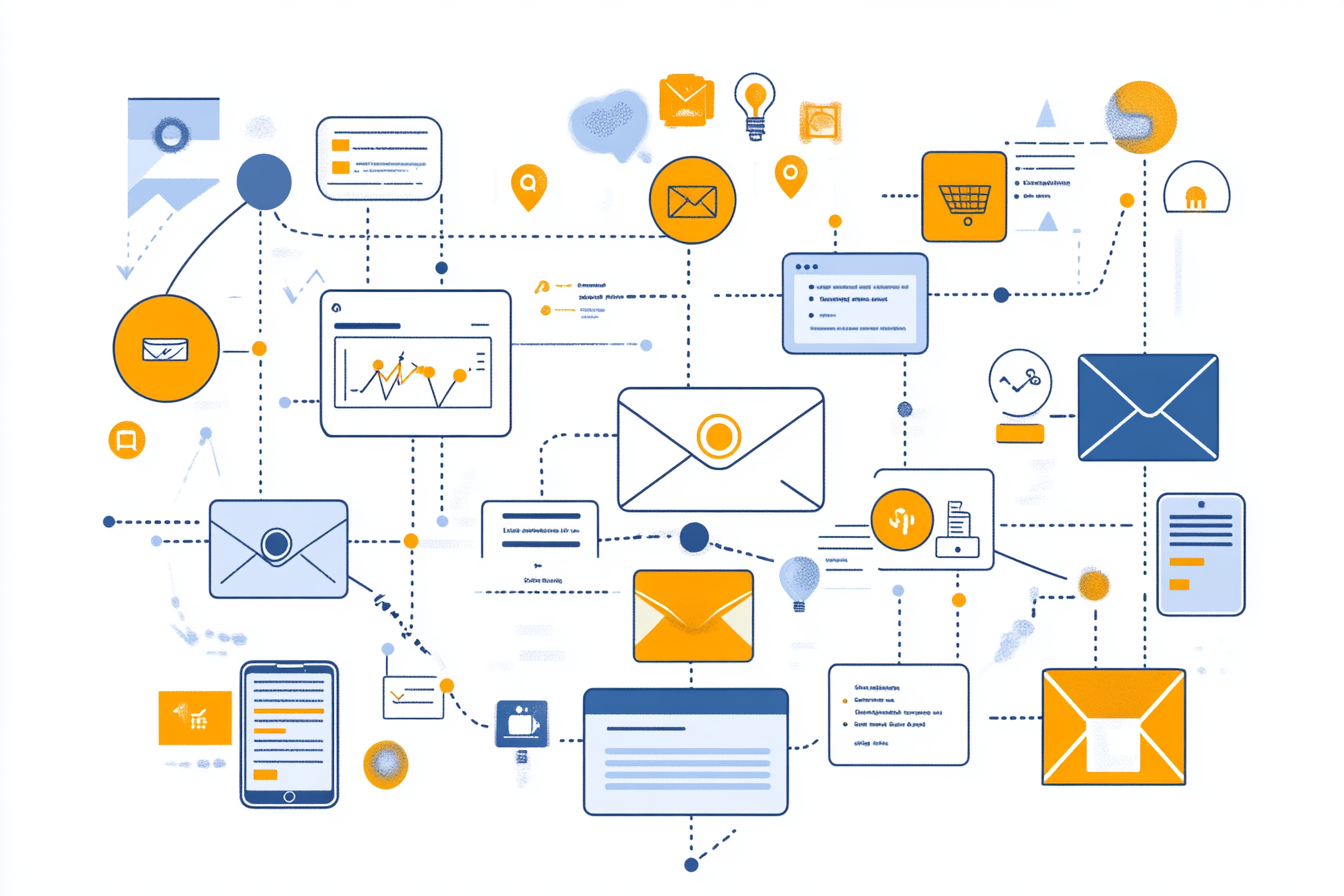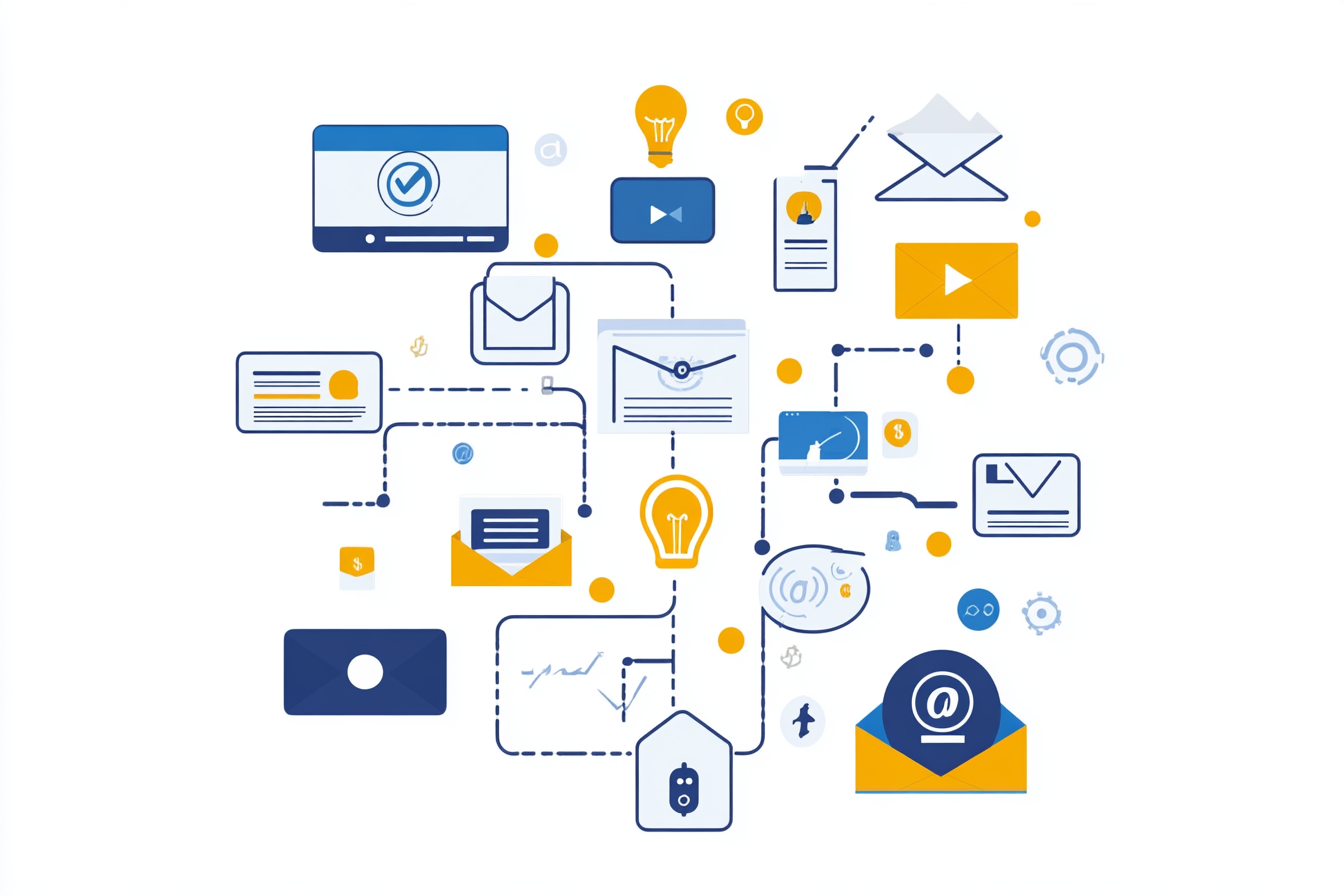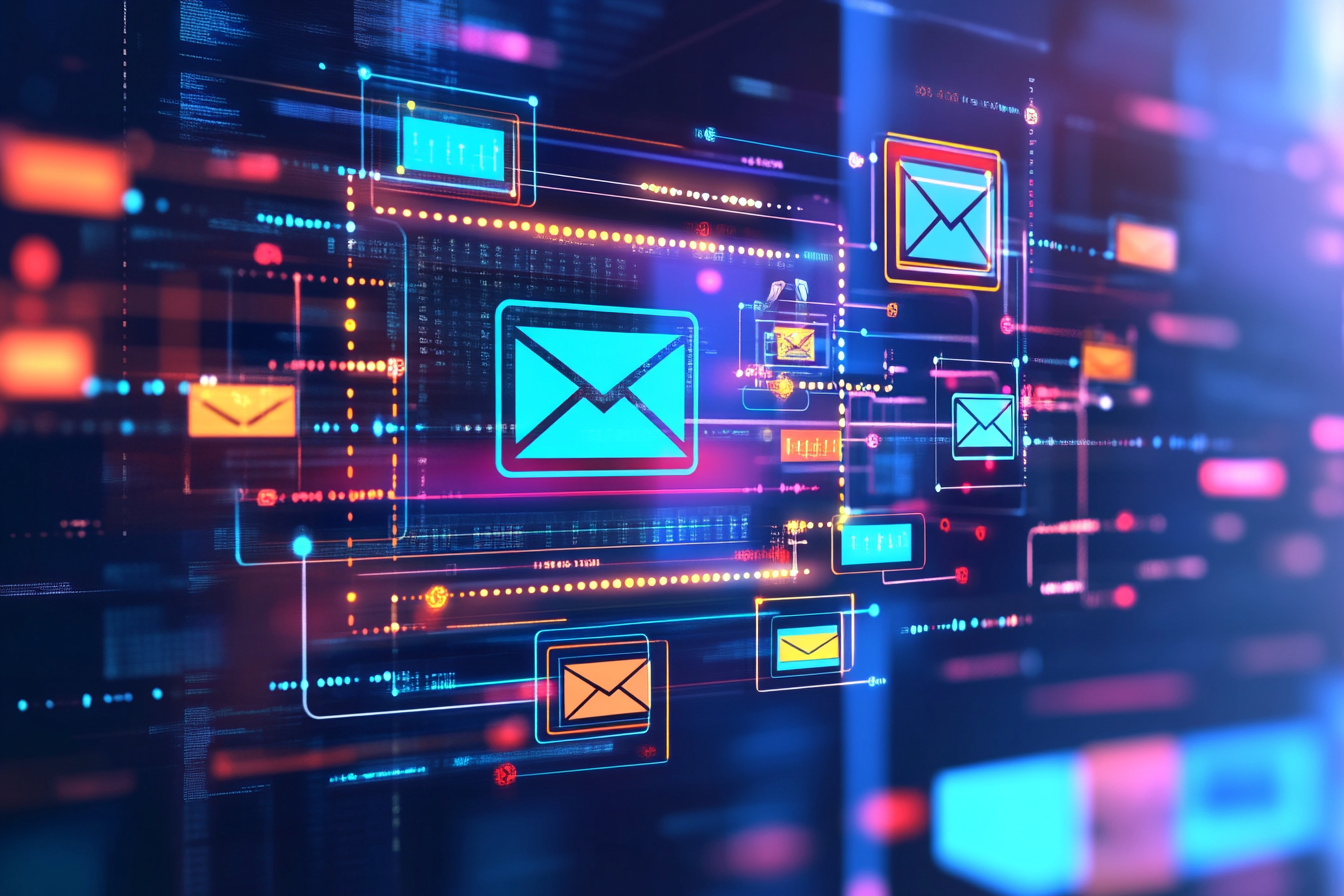Email marketing automation is a powerful tool that uses predefined rules to trigger messages and personalize content based on customer interactions. This technology allows marketers to save time and enhance customer relationships by sending timely, relevant communications without manual effort.
Key Takeaways
- Benefits of Email Automation: Increases efficiency, saves time, improves customer retention, and personalizes communication.
- Types of Automated Emails: Includes welcome emails, product recommendations, abandoned cart reminders, feedback requests, and re-engagement messages.
- Importance of Personalization: 90% of consumers prefer personalized content, which enhances engagement and brand loyalty.
- Effective Strategies: Utilize customer segmentation, automated drip campaigns, and win-back strategies to maximize marketing impact.
Discover how ipsom.io can help you streamline your email marketing automation!
Understanding Email Marketing Automation
Email marketing automation is the use of technology to send personalized emails based on predefined rules and customer interactions. It saves time and enhances communication by automating repetitive tasks. This allows marketers to concentrate on strategic planning rather than manual processes.
What is Email Marketing Automation?
Email marketing automation helps in sending targeted messages automatically when specific actions occur. This could be a sign-up, a purchase, or even an engagement with previous emails. By understanding customer behavior, marketers can provide timely and relevant content that resonates with each individual.
Importance of Automation in Marketing
Efficiency is a primary benefit of automation. It reduces manual efforts, allowing marketing teams to focus on developing creative strategies. Furthermore, automation scales easily. As a business grows, automation can maintain customer communication without the need for proportional resource increases. This leads to a more consistent brand presence and maximizes marketing efforts.
Key Functions of Email Automation
Email automation is integral to enhancing marketing efforts. It allows businesses to send targeted messages without manual intervention. Understanding the various types of automated emails and the role of trigger events is essential for effective campaigns.
Types of Automated Emails
Automated emails can significantly improve engagement. Here are the main types you should consider:
-
Welcome Emails: These are the first messages new customers receive. They serve as a personalized introduction, making customers feel valued.
-
Product Recommendations: These emails provide curated suggestions based on user behavior. They directly influence purchase decisions by highlighting relevant products.
-
Abandoned Cart Reminders: These messages encourage potential buyers to complete their purchases. A gentle nudge can recover lost sales.
-
Feedback Requests: Gather insights from customers to improve your offerings. This engagement helps build a connection and shows you value their opinion.
-
Re-engagement Emails: Send these to inactive customers. They aim to rekindle interest and encourage them to return to your brand.
The Role of Trigger Events
Trigger events are pivotal in email automation. They refer to specific customer actions that initiate automated messages. Examples include signing up for a newsletter or leaving items in their cart.
Understanding and implementing these personalized triggers foster better customer relationships. Relevant and timely messages keep customers engaged, ultimately leading to higher retention rates.
Get started with effective email automation solutions at ipsom.io.
Personalization: The Key to Engagement
Personalization is crucial for engaging consumers and boosting email marketing effectiveness. Studies show that 90% of consumers prefer personalized content. This preference enhances engagement, leading to higher open rates and click-through rates.
The Impact of Personalization
With personalized emails, brands can speak directly to their audience. Customized messages resonate more with recipients. This heightened relevance fosters a stronger connection with the brand. Monitor the response rates to see how personalization impacts engagement metrics.
Strategies for Personalization
Utilizing segmentation is a vital strategy in email marketing. By organizing your audience into different groups based on characteristics and behaviors, you can tailor campaigns more effectively.
Dynamic content is another powerful tool. It allows you to adjust email content in real-time, responding to specific user interactions. This creates a unique experience for each recipient.
Incorporating “surprise and delight” moments can also elevate your email marketing. Offering unexpected bonuses or exclusive content enhances customer satisfaction. These moments exceed expectations and strengthen brand loyalty.
By focusing on personalization, you can create more engaging and effective email campaigns that resonate with your audience.
Customer Relationship Building
Customer relationship building is essential for long-term business success. Automated email marketing plays a vital role in nurturing these relationships. By providing consistent, personalized communication, businesses can engage their customers effectively.
Lead Nurturing Through Automation
Lead nurturing involves building relationships with potential customers over time. It is about sending the right messages at the right moments. Automated drip campaigns are an effective technique for this. They deliver a series of emails that gradually provide valuable content based on user behavior. This method keeps your brand relevant and encourages informed decision-making.
Retention and Brand Affinity
Maintaining regular communication with your customers helps build brand loyalty. It keeps your brand at the forefront of their minds. Highlighting the features and benefits of your products further encourages ongoing engagement. When customers feel valued, they are more likely to return. Consistent and thoughtful communication fosters a strong connection between your brand and its audience.
Best Practices for Email Automation
To maximize the effectiveness of your email automation, follow these best practices. These strategies will help ensure that your emails reach your audience and incite engagement.
Avoiding Spam Filters
Adhere to regulations such as the CAN-SPAM Act. Use non-spammy subject lines to grab attention without triggering spam filters. Maintain a good sender reputation through permission-based marketing. Quality email design is equally important; ensure your HTML is clean and well-structured to enhance deliverability. This minimizes the chances of your emails ending up in the spam folder.
Tools and Providers
Choose an Email Service Provider (ESP) that offers robust APIs for better personalization and data integration. Opt for well-established platforms known for reliability and security. Utilize reputable email marketing tools that streamline compliance with regulations and enhance your marketing results. These tools can assist you in crafting visually appealing emails, tracking performance, and automating responses effectively.
Implementing these best practices will help you craft impactful email communication and grow your audience effectively.
Measuring Success and Adjusting Strategies
- Measuring Success: Fundamental for ongoing improvement in your email automation efforts.
- Tracking Responses: Provides valuable insights into campaign performance.
- Key Metrics Analysis: Helps refine strategies and achieve better results.
Tracking Automated Emails
-
Importance of Tracking Responses: Key to future strategy development.
-
Focus on Key Metrics:
- Open Rates: Measure how many recipients opened your emails.
- Click-Through Rates: Indicate how many clicked on links within the email.
- Conversion Rates: Show the percentage of users who completed the desired action.
- Engagement Levels: Gauge recipient interaction with your content.
-
Regular Monitoring:
- Identify trends over time.
- Make data-driven decisions for campaign adjustments.
Feedback for Improvement
- Gathering Customer Feedback: Essential for continuous improvement.
- Use automated requests to collect insights on your products and services.
- Guiding Product Development: Feedback helps enhance offerings and increase customer satisfaction.
- Encouraging Customer Experiences:
- Solicit reviews and testimonials.
- Utilize this social proof to boost brand credibility and influence potential customers.
Advanced Email Automation Strategies
Advanced email automation strategies are essential for maximizing engagement and improving customer retention. Implementing these strategies can significantly enhance your marketing efforts and ensure effective communication with your audience.
Win-Back Campaigns
Win-back campaigns focus on re-engaging customers who have shown signs of inactivity or declining interest. Understanding the reasons behind their disengagement is crucial. The strategy should not solely rely on discounts. Instead, emphasize reinforcing the value of your products or services, showcasing how they can still meet the customer's needs. Employ targeted messaging that resonates with past interactions, making customers feel appreciated and valued.
Event Reminders and Follow-Ups
Event reminders and follow-ups are vital in keeping customers informed about important happenings and product usages. Timely reminders ensure that customers do not miss out on events that interest them. It is also an opportunity to highlight underutilized features of your products. By encouraging customers to explore all aspects of a product, you foster a deeper connection and enhance their overall experience.
These advanced strategies not only nurture existing relationships but also pave the way for renewed interest among previously disengaged customers. Adopting these tactics can drive meaningful interactions and establish a lasting brand affinity.
Conclusion: The Future of Email Automation
Email marketing is becoming an essential form of owned media. It offers direct access to customers and enhances flexibility in communication. As companies shift focus towards more personalized and automated strategies, it is crucial to adapt to these evolving trends.
To stay ahead, businesses must prioritize personalization and automate their approaches. This fosters stronger relationships with customers and encourages loyalty over time. By implementing strategies such as customer segmentation and dynamic content, companies can improve engagement and drive conversions.
Investing in email marketing automation will not only streamline processes but also enhance customer experience. Remaining proactive in adopting these changes will position companies for success in the ever-changing digital landscape.
FAQ
What is email marketing automation, and how does it work?
- Email Marketing Automation: Allows businesses to send targeted emails based on customer actions using predefined rules.
- How It Works:
- Messages are triggered automatically
- Saves time and improves personalization
What types of automated emails should I send?
- Types of Automated Emails:
- Welcome Emails: Greet new subscribers.
- Abandoned Cart Reminders: Encourage customers to complete their purchase.
- Product Recommendations: Suggest items based on user behavior.
- Feedback Requests: Gather customer insights post-purchase.
- Re-engagement Messages: Rekindle interest in inactive subscribers.
- Benefits: Fosters better customer relationships and improves retention.
How do I ensure my emails do not go to spam folders?
- Avoiding Spam Filters:
- Comply with regulations like the CAN-SPAM Act.
- Use non-spammy subject lines.
- Maintain a clean email design.
- Send valuable content to subscribers.
What email service provider should I choose for automation?
- Choosing an Email Service Provider (ESP):
- Look for robust APIs and strong automation features.
- Ensure the provider is reliable.
- Popular Options:
- Mailchimp
- ActiveCampaign
- SendinBlue
How can I personalize my automated emails effectively?
- Personalization Techniques:
- Use segmentation to target specific audience groups.
- Implement dynamic content that changes based on user behavior.
- Utilize customer data for tailored messaging.
How do I measure the success of my email campaigns?
- Success Metrics to Track:
- Open Rates: How many recipients opened your email.
- Click-Through Rates: How many clicked on links within your email.
- Conversion Rates: The percentage of recipients who took a desired action.
- Engagement Levels: General interaction with your email content.
- Insights Gained: These metrics provide insights into your campaign effectiveness.
What are the best practices for segmenting email lists?
- Best Practices:
- Group contacts by demographics, purchase history, and engagement rates.
- Regularly update segmentation criteria based on customer behavior and preferences.
How can I use email automation to nurture leads?
- Nurturing Leads:
- Send targeted content over time using automated drip campaigns.
- Provide relevant information that addresses the specific needs and interests of leads.
How can I recover customers who have abandoned their carts?
- Recovering Abandoned Carts:
- Send timely reminders encouraging customers to complete their purchase.
- Include customized messages highlighting product benefits and offering incentives where appropriate.







